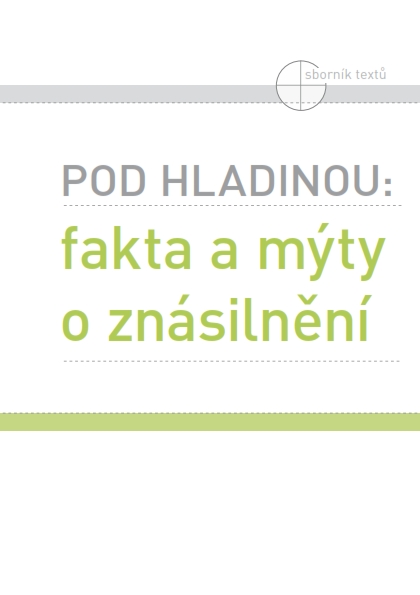
We kindly inform you that, as long as the subject affiliation of our 300.000+ articles is in progress, you might get unsufficient or no results on your third level or second level search. In this case, please broaden your search criteria.

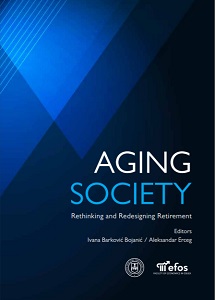
The “Silver Tsunami” is here! According to various relevant sources such as the UN Population Division, the WHO, and the ILO, population across the world is getting older. By 2050, there will be more than 20% of the world’s population aged 65 years and over. Statistics for the European Union reveal the same - the age structure of the European population is expected to change significantly over the next decades and by 2060, the share of people aged 65 and above will increase from 18% to 30% compared to now, while the share of people aged above 80 will more than double. Thus, in addition to notions such as “Silver Tsunami”, “Age Wave”, and the like, it is not surprising that the European Union has launched a notion “Silver Economy” related to economic activities of the population aged 50 and over and their impact on various sectors of the national economy. This negative demographic transition, i.e. population aging, has shown four very distinctive features: unprecedented, pervasiveness, endurance and profound implications on human life in general. On a more personal level, what we are witnessing today as a trend, we will experience first-hand in the decades to come. Yet, times are changing. An aging population is becoming a reality that is surrounded by various myths when it comes to older people as workers or as consumers. The fact is that people today live longer and healthier lives, which requires a shift in perception of age when it comes to supply and demand sides of economics. It also holds true from the perspective of other disciplines. This, in turn, opens a new frontier in academic, practical and policy thinking about rethinking aging and redesigning retirement. This multidisciplinary edited book “The Aging Society: Rethinking and Redesigning Retirement” is one attempt not to be swept away by the “Silver Tsunami” tide. The content of the chapters reveals the multifaceted and highly complex issue of aging which brought together researchers from various fields. Aging has been initially dominant in medical research since it is primarily a physiological process, yet it has proven to be a social transformation with numerous repercussions calling for researchers from economics, communication, law and others to join the scientific discussion. The authors in this edition have tried to shed light on the potential of aging research by drawing attention to various topics such as aging as a normal process, concept and measurement of the quality of life of the elderly, financial challenges and retirement literacy of the older population, specific bioethical issues, silver architecture for seniors, protection of the rights and safety of older people in transport, social entrepreneurship and franchising, collaborative economy, an age-specific ICT use gap, media literacy and communication. The book has gathered authors from Josip Juraj Strossmayer University of Osijek – Faculty of Economics in Osijek, Faculty of Law, Faculty of Medicine Osijek / Clinical Hospital Center Osijek and Faculty of Civil Engineering and Architecture Osijek, as well as Faculty of Economics and Business Zagreb (University of Zagreb), Virovitica College, Croatian Education and Teacher Training Agency, University of Information Science and Technology, “St. Paul the Apostle” (Macedonia), Beykoz University, Vocational School at Department of Social Sciences (Turkey), Nisantasi University, Vocational School at Department of Logistics (Turkey), and Warsaw School of Economics (Poland). Such institutional diversity is a signal that the issue of aging is a universally attractive research topic that easily transcends disciplinary and national boundaries. As editors of this book, we feel obliged to applaud our authors for making a research effort and scientific contribution in the advent of the global COVID-19 pandemic crisis. Our gratitude is extended to our reviewers who have been affirmative towards the content and style of this work. The publication of this book will be a permanent reminder of strength, diligence, creativity and resilience of academic scholars as individuals and universities as institutions in times challenging us on both a personal and a professional level.
More...
Based on statistics, it is an indisputable fact that the world population is constantly aging, both in terms of the number and proportion of old people in the total population. Thus, population aging is becoming a significant social transformation that has implications for almost all sectors of society. Older people can be seen as contributors to the development involved in policies and programs at all levels. The inverted population pyramid is becoming increasingly apparent, creating difficulties in maintaining the health and pension systems, especially in countries where the share of the elderly has almost doubled. Recently, the perception of older people has changed. Regardless of the reduced abilities, it should not be forgotten that aging brings some values that integrate them into the social environment. One should not forget the acquired professional knowledge and experience, voluntary work and the like, which can contribute to economic growth. The discussions conducted by economists on the problem of age are predominantly neoclassical. The view from another angle comes from sociology authors, sociological politicians who themselves produced their own “older age policies”. In contrast to neoclassical individualism, the sociological picture of aging outlines the social construction of older age and the structural dependence of the elderly. At the heart of this paper is a view from modern macroeconomics that puts into the forefront a household that uses its intertemporal function to plan its consumption. Theoretical explanations are contained in four main modeling frameworks that have become central tools in economic and age studies: the Ramsay model, the generations model, the perpetual youth model, and the overlapping generations model.
More...
Life of retired people cannot be financed from the public systems only. The attrition rate has been decreasing for many years and pension systems in many countries are at risk of bankruptcy. The author compares different kinds of investments possible to be made to finance the retirement period. The analysis of risk and return is conducted for typical retirement investments like bonds, stocks, or real estate. The paper aims at answering the question if it is possible to choose the best asset at any time as the retirement time investment. The study is done on the basis of the Polish investor and also contains the analysis of different types of risks concerned with analyzed kinds of assets.
More...
ICT is considered as one of the fundamental values and contribution to the digital economy. ICT use is becoming an increasingly crucial determinant for the old-age population to meet their demands for high-quality life and low-cost services. However, ICT use, including the employment of online purchase of the elderly population, varies widely among different EU-281 countries. This study aims to investigate Internet usage, especially in terms of online purchase behaviors among elderly Europeans aged 65 and older. Through clustering analysis, the aim of the paper is to identify the heterogeneity in Internet usage among the elderly population in the EU members. Results highlight the gap that exists in the level of online purchasing widely among EU countries.
More...
Since the world’s population is aging, there have been numerous articles, books, and research conducted on that topic connected with the quality of life, expectations, and realistic possibilities. An additional point in favor of considering the elderly population as an unresearched economy or market is that for the first time since 2018 we have more people over 64 than children younger than 5 years of age. Elderly people today are of course different than previous generations of pensioners. This is especially important when it comes to technology usage. On the other hand, information and communication technology has never been more affordable and accessible. Software solutions have become our everyday passion and mobile devices are the last thing we check before falling asleep. Also, the information, in general, is more important and easier to get and resourceful for different kinds of analysis. The main aim of the chapter is to research ICT options and solutions for the population gathered under the umbrella term Silver Economy (the elderly in our societies). Services and applications which can make their life easier and better will be considered together with preparation of pensioners to use ICT. Mainly analyzing statistical data, the chapter will use a short questionnaire and interviews to check the situation in the local environment. Finally, a comparison will be made among the elderly population in terms of ICT usage in Japan, the USA, the EU, and Croatia.
More...
The prevalence of the aging society phenomenon in the last decade forces governments, countries, and people to re-evaluate the perspectives and potential of lifelong learning and the effects it has on the society as a whole. According to World Bank data, the percentage in the total world population in the 0-14 year-old segment is declining, while the United Nations predict that by the year 2050 there will be more people over the age of 60 (2.1 billion) than the adolescents and young people aged 10-24 years (2 billion). The segment of elderly people has longer life expectancy and better overall health condition due to advances in medicine and technology. These trends implicate urgency for better inclusion and defining new roles for this segment. The most effective way to do this is to enable the elderly to have access to information and to know how to properly use it. The major role in this shift is certainly played by information and communication technology. The aim of this paper is to examine the state and possibilities of including the elderly as a more active society member through the use of digital technology and lifelong learning.
More...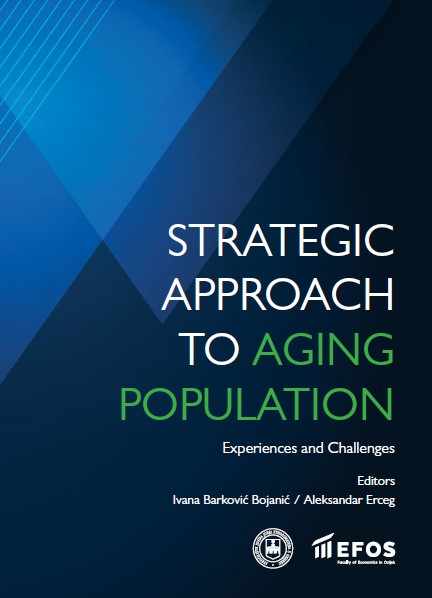
The paper presents the concept of the „silver economy” as an economic system related to population aging and underlines the features of this policy idea. The study first introduces the discourse and stages of constructing this system by international and national public policy actors in aging. Next, a critical analysis of the dimensions and areas of implementation and development of the silver economy as a policy concept was carried out as well as a review of its external and internal limitations. The conclusion contains proposals for further research directions.
More...
With the trends of demographic aging being clearly expressed in this modern age, older persons legal protection has become complex and demanding. The number of older persons is growing continuously and the fastest of all other population groups. It is a very heterogeneous group whose members and their needs are very diverse. Despite this issue's growing relevance, the terminology used to refer to older people is still uneven and often inappropriate. There is neither a generally accepted nor a precise definition of an older person. The legal protection of older persons at the international level is still insufficient. An international treaty on the protection of the rights of older persons has not been adopted yet. This protection relies on the general protection of human rights and several non-binding international instruments. In the Republic of Croatia, older persons protection is based on several regulations from various sectors. It is noted that the problems in exercising their rights are diverse. The biggest problems faced by older persons in the Republic of Croatia fall within the scope of poverty and social exclusion, long-term care, health care, various forms of violence, ageism, stigma, and discrimination. In addition to all these complex and painful problems and the economic crisis that most countries have been going through in recent years, an additional dramatic deterioration in older persons’ status and rights has occurred with the COVID-19 pandemic. The problems older people faced at that time in such circumstances have been further exacerbated. Thus, older persons have been exposed to an increased risk of severe illness and death and the problems related to freedom of movement in general, access to health and social services, access to information, and exposure to ageism and discrimination.
More...
The contribution of economists in the scientific debate over aging and its impact on society and the economy comes in the form of various theoretical models, particularly from the macroeconomic point of view. The aging problems have been dealt with by using a common approach to problem-solving and interdisciplinarity. In this paper, we took a more straightforward model approach from macroeconomics, Modigliani’s Life-Cycle Hypothesis, whose content can be incorporated into the concept of life cycle theory. In this way, the theory shows how resources are transferred at different times to the outcome logically and rigorously.
More...
In recent decades, the elderly have an increasing share in the population’s age structure, and the implications of population aging are visible in all aspects of society. A higher proportion of the elderly population is accompanied by an increase in the number of people who spend a more extended period of their lives as retirees, which affects the social redefinition of the concept of retirement. Retirement of entrepreneurs is an essential topic since entrepreneurial retirement reflects its sustainability, which has a broader social role. The biggest challenges related to the retirement of entrepreneurs are those of psychological nature whose causes are found in their almost exclusive focus on the business aspect of life and the lack of development of other interests and contacts outside the business community during the active working period. After retirement, entrepreneurs strive for activities that enable retention of existing patterns of behavior and continuity in developing relationships within the same social groups. The paper presents an example of an association of retired entrepreneurs in the Netherlands, which accomplishes two important goals through its mentoring program, i.e., it enables social inclusion of retired entrepreneurs and enables younger entrepreneurs to successfully overcome business challenges with the mentoring support of retired entrepreneurs. Modeled on the example of good practice from the Netherlands, in early 2020, an association of retired entrepreneurs was launched in Croatia. The topic of the retirement of entrepreneurs and sustainability of their business ventures is crucial to Croatia because of the enormous wave of expected retiree entrepreneurs who founded companies in the 1990s after Croatia transitioned to a market economy. This paper presents qualitative research conducted among retired entrepreneurs in Croatia interested in volunteering as mentors to younger entrepreneurs. The concluding part of the paper points out the need to support the development of programs that enable social inclusion of retired entrepreneurs, applying their knowledge and experience in encouraging the development of entrepreneurship.
More...
Population aging and its repercussions have a powerful impact on the traditional concept of retirement and the established transition patterns from work to retirement. Demographic statistics in the twenty-first century show low fertility and low mortality rates for most countries, leading to the Croatian population aging. Several trends impact the aging population: most people live much longer lives, have better health, and have different personal expectations than generations before us. For example, people now expect to live longer after leaving full-time work. The purpose of this paper is to discuss the retirement and post-retirement attitudes of teachers aligned with the current priorities in life. The paper aims to present the changing perception of aging from biological, economic and social perception and investigate how teachers in the region of Slavonia view their pension plans, life expectancies, and the expected needs in old and retirement age. This paper analyzes part of the data collected in the survey conducted on a sample of 5%of 11,839 teachers employed in elementary and secondary schools in the five Slavonian counties: Virovitica-Podravina, Požega-Slavonia, Brod-Posavina, Osijek-Baranja and Vukovar-Srijem counties. The research results may be beneficial for age-friendly policy-making and administrative reforms needed to accommodate the Croatian „silvering” of economy and society.
More...
The silver economy is a relatively new term representing demographic change and explaining the aging of the population as the economic potential. As a result, global population aging has a strong influence on the economy and society. However, national governments and rural and urban people are not adequately prepared for the aging population growth. The healthcare sector sees the elderly population as one of its most essential consumers due to the many disorders connected with age. The connection between the silver economy and the health sector allows us to qualify and view aging as a consumer group that shapes the health market and directly influences health policymaking. Population aging affects a country’s economic potential and implies socio-health aspects. Active again communicates the specific and more demanding needs of the elderly population, which can be seen through public and personal consumption, primarily through health services, emphasizing medicine consumption. As one of the potential viewpoints for both the silver and healthcare sectors, a growing number of older people are acquainted with the benefits digital technology can provide. With the use of e-tools and information technology, the healthcare sector can also increase its effectiveness for the elderly population. Thus, in this chapter, we analyze the potential of implementing different e-tools in the healthcare sector, especially toward aging people. In the research, we analyze the potential of the elderly and the elderly population and their attitudes and contribution to the health system as the majority consumers of health services.
More...
Data on demographic trends in developed countries indicate the need for increased attention and a better approach to care for older adults. Better health care results in increased life expectancy, which as such poses certain challenges to society. Life expectancy accompanied by good health alone often does not guarantee an individual’s satisfaction. Due to an accelerating pace of life and continuous lifestyle changes, social exclusion of retired older adults from the community appears to be increasingly present. To reduce the occurrence of this phenomenon and enable this population group to remain active members of the community, it is important to offer them the opportunity for education. After the analysis of European trends, the paper points out the need for continuous strategic planning and more agile organization of education in the Republic of Croatia. Special attention is given to the situation in the city of Osijek, which is a center for education in Osijek-Baranja County. The types and usefulness of the most common forms of education conducted in the period from 2015 to 2020 are also presented.
More...
Older people are often insufficiently involved in the community’s life and participate to a limited extent in cultural activities for various reasons. These reasons may be geographical isolation, unfavorable financial opportunities, disability, etc. Lack of awareness of the need to involve generation 65+ in cultural education further adversely affects the availability of cultural content intended for them. Increased access to such content contributes to their quality of life, activation, and greater inclusion in society. Social inclusion is an essential element of quality of life and dignified aging. It permeates different segments of life and includes different dimensions and layers. One of its main characteristics is that it is changing. Older age brings with it the problem of adapting to everyday life. The involvement of the elderly population in cultural content is significant, both for the mentioned population and for the local community. This chapter will present the results of a survey conducted among the elderly population of Osijek - Baranja County on their involvement in cultural content and culture perception.
More...
This paper demonstrates a model for predicting natural population change (the number of live births) with digital demography approaches. We demonstrate that this prediction model significantly improves forecast accuracy over several cross-validation criteria. Prediction is done by means of the analytical tool Google Trends, and in the context of the pandemic crisis, the number of births in 2021 will be just 87% of what would otherwise be „a normal year” in Croatia. We estimate that between 12 and 14% fewer children will be born (from 3,400 to 3,800), i.e., about 32,000 – 33,000. Croatia is on its way to becoming an excellent nursing home of the European Union. The causes of natural depopulation in Croatia are complex and intertwined. Increased emigration, demographic aging, the white plague, and challenging economic conditions have a disincentive effect on the natural population change. The country has already unquestionably lost the core of population that creates new generations. Namely, in the last seven years alone (since it became a member of the EU), Croatia has lost 50,000 pupils and gained 50,000 new pensioners. Today, Croatia would have 10% more pupils if there had not been such intensive emigration of the population after joining the EU, and consequently, it would be younger. A particular problem in terms of demographic issues are numerous areas that are becoming a periphery due to young people migration - with already 3/4 of the country being a periphery in the cultural and economic sense. In this paper, we discuss the assumption that emigration and population aging is a process primarily shaped by the lack of modernization policy. The EU, which systematically neglects the demographic issue in the center-periphery relationship, also plays a profound role in this process of mechanical and natural population change in Croatia.
More...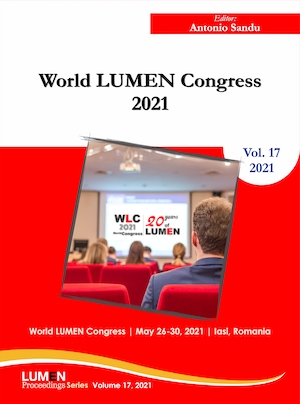
Older age can be accompanied by a lot of changes in the field of health, which influence the social functioning of seniors.One of the factors influencing the quality of life of seniors is the connection of healthcare and social care, built on the interdepartmental cooperation. This approach is still absent in Slovakia.The aim of the paper is therefore to emphasize the importance and need of integrated care and to describe the barriers that prevent its implementation in Slovakia. In search of answers to the questions: “When and why was the healthcare and social care department of seniors established in Slovakia? What are the reasons persisting in this condition? What are the consequences of this divided care for the seniors in practice? What strategies use facilities for seniors to overcome this situation during the COVID-19 pandemic?” the authors used the method of the case study (Yin, 2003) focused on the Trnava self-governing region. Persistent structural, procedural, legislative and political factors have been identified as the main barriers. Specific for Slovakia is the existence of a barrier of the profession, which is caused by the low interest of social workers in the issue. The authors state that the situation in Slovakia is caused mainly by the reflection of integrated care as a political problem. In the end, the authors make several suggestions for solving the situation.
More...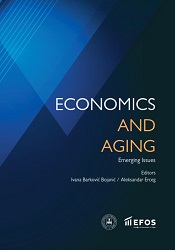
The ever-increasing number of the elderly in developed countries creates the need to keep them active as long as possible to maintain their psychophysical health and prevent them from living isolated, sedentary life. The chapter analyzes the phenomenon of an aging population and the characteristics of this life stage in European countries, emphasizing the Republic of Croatia. Based on the hypothesis that the number of the elderly using information and communication technologies has been increasing, the chapter offers a solution to the problem of keeping them up to date through a web application. The application enables them to communicate easily and quickly, establish social contacts and find out about organized meetings and training of associations and other institutions. The application also lists work opportunities for the elderly. If mentally and physically healthy, they can earn additional money, increase the household budget and beneficially use their time.
More...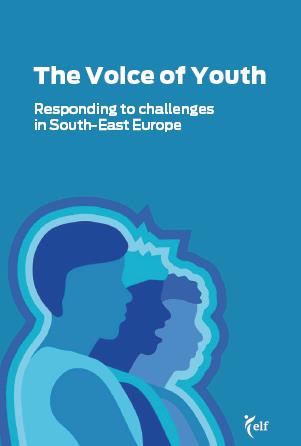
The fast technological improvements, sustainable growth and development of the world economy have led to what has become a fundamental determinant of the modern, hectic way of life, known as the lifestyle of the 21st century. In such context, people’s expectations are increasing, and they are always seeking for the new opportunities; however, many are often failing to take a break from every day’s haste and stress. Young people often do not have time for their private and business obligations, and thus for activism and caring for society. Scientist in technical and architectural sciences, Mr. sc. Marina Šimunić, finds that only 5% of young people are socially engaged in the Republic of Croatia. This research finds the main reason for such a low interest in social activities and lack of initiative for changes is the fact that youth accept their community as it is. Decreased involvement of young people in social actions has becoming more evident in Croatia especially, when an average of 30,000 young people a year have migrated in the period from 2015 to 2020.
More...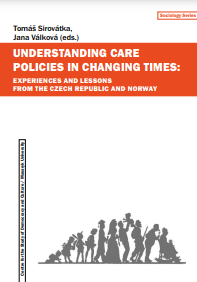
In this final chapter, we aim to interpret the findings presented in the individual chapters of the book within the theoretical frame outlined in Chapter 1. We assess the main findings regarding the current development of childcare and eldercare policies in the Czech Republic and Norway, the discourses of the policy actors in both countries, and the strategies and views of families that are providing and ensuring care for children and elderly persons. Lastly, we discuss some possibilities for policy changes or innovations that might facilitate the combination of family care with paid employment.
More...